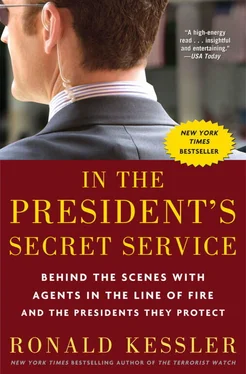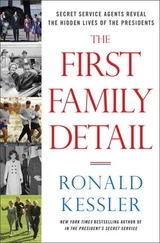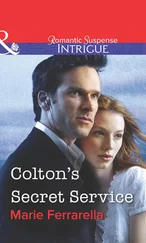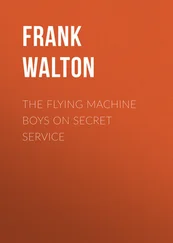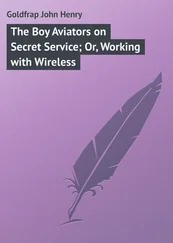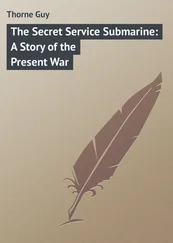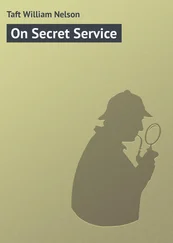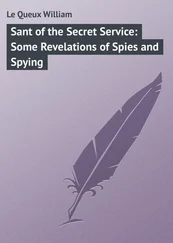With the agency’s success, Congress gave the Secret Service broader authority to investigate other crimes, including fraud against the government. In 1894, the Secret Service was investigating a plot to assassinate President Grover Cleveland by a group of “western gamblers, anarchists, or cranks” in Colorado. Exceeding its mandate, the agency detailed two men who had been conducting the investigation to protect Cleveland from the suspects. For a time, the two agents rode in a buggy behind his carriage. But after political opponents criticized him for it, Cleveland told the agents he did not want their help.
As the number of threatening letters addressed to the president increased, Cleveland’s wife persuaded him to increase protection at the White House. The number of police assigned there rose from three to twenty-seven. In 1894, the Secret Service began to supplement that protection by providing agents on an informal basis, including when the president traveled.
It did not help the next president, William McKinley. Unlike Lincoln and Garfield, McKinley was being guarded when Leon F. Czolgosz shot him on September 6, 1901. McKinley was at a reception that day in the Temple of Music at the Pan-American Exposition in Buffalo, New York. Long lines of citizens passed between two rows of policemen and soldiers to shake his hand. Two Secret Service agents were within three feet of him when the twenty-eight-year-old self-styled anarchist joined the line and shot the president twice with a pistol concealed in a handkerchief. Bullets slammed into McKinley’s chest and stomach. Eight days later, he died of blood poisoning.
Still, it was not until the next year—1902—that the Secret Service officially assumed responsibility for protecting the president. Even then it lacked statutory authority to do so. While Congress began allocating funds expressly for the purpose in 1906, it did so only annually, as part of the Sundry Civil Expenses Act.
As protective measures increased, President Theodore Roosevelt wrote to Senator Henry Cabot Lodge that he considered the Secret Service to be a “very small but very necessary thorn in the flesh. Of course,” he wrote, “they would not be the least use in preventing any assault upon my life. I do not believe there is any danger of such an assault, and if there were, as Lincoln said, ‘Though it would be safer for a president to live in a cage, it would interfere with his business.’”
Unsuccessful assassination attempts were made on President Andrew Jackson on January 30, 1835; President Theodore Roosevelt on October 14, 1912; and Franklin D. Roosevelt on February 15, 1933, before he had been sworn in. Even though Congress kept considering bills to make it a federal crime to assassinate the president, the legislative branch took no action. Members of the public continued to be free to roam the White House during daylight hours. In fact, back when the White House was first opened, a deranged man wandered in and threatened to kill President John Adams. Never calling for help, Adams invited the man into his office and calmed him down.
Finally, at the Secret Service’s insistence, public access to the White House grounds was ended for the first time during World War II. To be let in, visitors had to report to gates around the perimeter. By then, Congress had formally established the White House Police in 1922 to guard the complex and secure the grounds. In 1930, the White House Police became part of the Secret Service. That unit within the Secret Service is now called the Secret Service’s Uniformed Division. As its name implies, the division consists of officers in uniform.
In contrast to the Uniformed Division, Secret Service agents wear suits. They are responsible for the security of the first family and the vice president and his family as opposed to the security of their surroundings. They also are responsible for protecting former presidents, presidential candidates, and visiting heads of state, and for security at special events of national significance such as presidential inaugurations, the Olympics, and presidential nominating conventions.
By the end of World War II, the number of Secret Service agents assigned to protect the president had been increased to thirty-seven. The stepped-up security paid off. At two-twenty P.M. on November 1, 1950, two Puerto Rican nationalists tried to force their way into Blair House to kill President Harry S. Truman. The would-be assassins, Oscar Collazo, thirty-six, and Griselio Torresola, twenty-five, hoped to draw attention to the cause of separating the island from the United States.
The two men picked up a couple of German pistols and took a train from New York to Washington. According to American Gunfight by Stephen Hunter and John Bainbridge, Jr., they took a cab to the White House. It turned out that the White House was being renovated, and their target was not staying there. The building was in such poor condition that Margaret Truman’s piano had begun to break through the second floor. From the cab driver, Collazo and Torresola learned that during the renovation, Truman—code-named Supervise—was staying at Blair House across the street. They decided to shoot their way in.
Getting out on Pennsylvania Avenue, Torresola walked toward the west side of Blair House, while Collazo approached from the east. They planned to arrive at the mansion simultaneously with guns blazing, take down the security, and then find the president. As marksmen, Torresola was by far the better shot; Collazo was engaged in on-the-job training. But for the two men, fate would have its own plans.
Secret Service Agent Floyd Boring and White House Police Officer Joseph Davidson were manning the east security booth. In the west security booth was White House Police Officer Leslie Coffelt. White House Police Officer Donald Birdzell was standing on the front steps under the mansion’s canopy his back to the street, when Collazo came up behind him.
Unfamiliar with the automatic pistol he carried, Collazo tried to fire. The gun clicked, but nothing happened. Birdzell turned at the sound, to see the gunman struggling. Then the pistol cracked. A round tore into Birdzell’s right knee.
Leaving the east security booth, Agent Boring and Officer Davidson drew their pistols and opened fire on Collazo. Hearing the shots, Secret Service Agent Stewart Stout, who was inside Blair House, retrieved a Thompson submachine gun from a gun cabinet. He had been standing post in a hallway, guarding the stairs and elevator leading to the second floor, where Truman was napping in his underwear. Bess Truman—code-named Sunnyside—as usual was out of town. She hated Washington.
Standing in front of the west security booth, Torresola whipped out his Luger and pumped rounds into Officer Coffelt’s abdomen. Coffelt slumped to the floor. Torresola came around from the guardhouse and encountered another target—White House Police Officer Joseph Downs, who was in civilian clothes. Torresola hit him three times—in the hip, the shoulder, and the left side of his neck.
Then Torresola jumped a hedge and headed toward the entrance where wounded officer Birdzell was aiming his third or fourth shot at Collazo. Spotting Torresola, Birdzell squeezed off a round at him and missed. Torresola fired back, and the shot tore into the officer’s other knee.
In a last heroic act, Coffelt leaped to his feet and propped himself against his security booth. He pointed his revolver at Torresola’s head and fired. The bullet ripped through Torresola’s ear. The would-be assassin pitched forward, dead on the street.
The other officers and agents blasted away at Collazo. He finally crumpled up as a shot slammed into his chest. Meanwhile, Secret Service Agent Vincent Mroz fired at him from a second-floor window.
The biggest gunfight in Secret Service history was over in forty seconds. A total of twenty-seven shots had been fired.
Читать дальше
